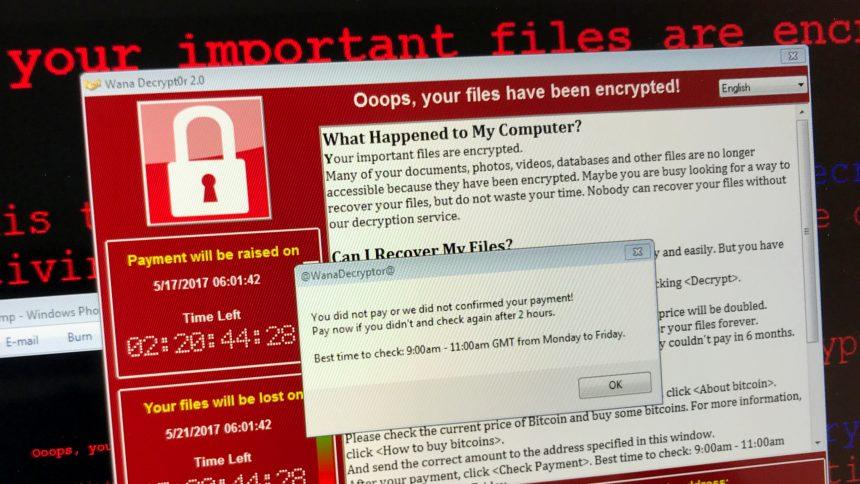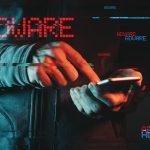Ransomware is a notorious form of malware designed to encrypt a victim’s files and demand a ransom payment in exchange for the decryption key. Once activated, ransomware effectively holds digital data hostage, often leading to severe consequences for both individual users and organizations. This type of malware is extremely disruptive, potentially resulting in data loss, privacy breaches, and significant financial impacts. Among recent ransomware threats, the Frag ransomware is particularly malicious, following a pattern of encrypting data and leaving an ominous ransom note for its victims.
Remove annoying malware threats like this one in seconds!
Scan Your Computer for Free with SpyHunter
Download SpyHunter now, and scan your computer for this and other cybersecurity threats for free!
Overview of Frag Ransomware: Infection Process, Actions, and Consequences
Frag ransomware is part of a category of threats known as file-encrypting ransomware. Its primary function is to infiltrate systems, encrypt files, and demand a ransom in exchange for a decryption tool. Once Frag ransomware infiltrates a system, it begins by targeting various file types and renaming them with a unique extension—e.g., .frag—making them inaccessible without the decryption key.
Installation and Spread of Frag Ransomware
Frag ransomware typically spreads through phishing emails, malicious links, and compromised downloads. Once the victim unknowingly opens the malware file, Frag installs itself on the system and silently begins encryption. Attackers often use misleading email attachments, disguised as legitimate files or software updates, to trick users into downloading the ransomware.
Actions Taken by Frag Ransomware on Infected Systems
Upon installation, Frag ransomware performs several actions:
- System Scanning: It scans the system, locating files with extensions it is programmed to target.
- File Encryption: It encrypts these files, making them inaccessible and appending them with a unique extension (e.g., “filename.frag”).
- Ransom Note Creation: The ransomware leaves a ransom note on the desktop or within each folder, containing payment instructions and consequences for non-compliance.
This threat results in severe consequences, as users are unable to access any encrypted files without paying the ransom, which is typically demanded in cryptocurrency. The ransom note provides details on how victims can supposedly recover their files by making a payment; however, paying the ransom doesn’t guarantee the decryption key, and it often emboldens attackers to continue similar schemes.
Frag Ransomware’s Ransom Note
Frag ransomware leaves a specific ransom note on the infected computer, often named “README .txt” or similar. This note informs victims of the encryption, instructing them to pay a specified amount in cryptocurrency. It generally includes a warning that files will remain permanently encrypted if the ransom isn’t paid within a certain timeframe. Additionally, the note may include a unique ID number for the victim to communicate with the attackers, promising that payment will allow the victim to recover their files.
Text presented in this message:
Frag is here!
If you are a regular employee, manager or system administrator, do not delete/ignore this note or try to hide the fact that your network has been compromised from your senior management. This letter is the only way for you to contact us and resolve this incident safely and with minimal loss.
We discovered a number of vulnerabilities in your network that we were able to exploit to download your data, encrypt the contents of your servers, and delete any backups we could reach. To find out the full details, get emergency help and regain access to your systems,
All you need is:
1. Tor browser (here is a download link: hxxps://www.torproject.org/download/
2. Use this link to enter the chat room – –
3. Enter a code ( – ) to sign in.
4. Now we can help you.
We recommend that you notify your upper management so that they can appoint a responsible person to handle negotiations. Once we receive a chat message from you, this will mean that we are authorised to pass on information regarding the incident, as well as disclose the details inside the chat. From then on, we have 2 weeks to resolve this privately.
We look forward to receiving your messages.
Purpose of Ransomware and Threat to Infected Systems
The primary purpose of Frag ransomware, like other ransomware types, is to extract money from its victims. By holding important files hostage, it puts pressure on users to pay quickly to regain access. Beyond monetary loss, ransomware infections can lead to breaches of personal or organizational privacy, potential identity theft, and further data corruption. Due to its destructive nature, ransomware poses significant threats to both individuals and businesses.
Symptoms of Frag Ransomware Infection
If Frag ransomware is present on a system, users may notice the following symptoms:
- Inability to open or access files, with filenames altered to include the .frag extension.
- Appearance of a ransom note on the desktop or within affected folders.
- Unusual system behavior, such as slowed performance or restricted access to certain system features.
- Disappearance of original file icons, replaced by generic or unknown file icons.
Detection Names Associated with Frag Ransomware
To help users identify Frag ransomware, here are some common detection names it may appear under across different antivirus tools:
- Ransom.Frag
- Trojan-Ransom.Win32.Frag
- Mal/Ransom-FR
- Filecoder.Frag
Similar Ransomware Threats
Other ransomware families share similar functions and infection methods. Users should be aware of the following threats, which operate similarly to Frag ransomware:
- WannaCry: Known for widespread attacks and targeting multiple file types.
- LockBit: Encrypts files and demands ransom with a detailed note.
- Ryuk: Known for high ransom demands and targeting large organizations.
Removal Guide for Frag Ransomware
The removal of Frag ransomware requires caution, as improper handling can lead to further issues. Follow this detailed guide to remove Frag ransomware safely:
Remove annoying malware threats like this one in seconds!
Scan Your Computer for Free with SpyHunter
Download SpyHunter now, and scan your computer for this and other cybersecurity threats for free!
- Enter Safe Mode:
- Restart your computer and press the F8 key repeatedly before the Windows logo appears.
- Select Safe Mode with Networking from the Advanced Boot Options menu.
- Disconnect from the Internet: Temporarily disconnect from the internet to prevent further data breaches or communication with the ransomware’s control server.
- Delete Temporary Files:
- Open Disk Cleanup (search for it in the Start menu) and select the main drive (typically C:).
- Delete temporary files and unnecessary files that may harbor the ransomware.
- Uninstall Suspicious Programs:
- Go to Control Panel > Programs and Features and look for any recent or suspicious programs.
- Right-click and select Uninstall to remove any unknown or suspicious software.
- Scan with Anti-Malware Software:
- Download SpyHunter to scan your system for ransomware remnants.
- Run a full scan and quarantine or remove any detected threats.
- Restore Files (If Backups Are Available): If you have backed up your files, you can restore them after verifying that the ransomware is completely removed.
Note: Avoid paying the ransom, as there is no guarantee of file recovery, and it could incentivize future attacks.
Preventing Future Ransomware Attacks
To prevent future ransomware infections, follow these best practices:
- Use Antivirus Software: Keep reliable antivirus software, such as SpyHunter, updated and active.
- Regularly Backup Files: Regularly back up your files on external or cloud storage to minimize data loss in the event of an attack.
- Avoid Suspicious Links and Attachments: Avoid opening links or downloading attachments from unknown sources, especially in unsolicited emails.
- Keep Software Updated: Regularly update your operating system and applications to protect against security vulnerabilities.
- Enable Firewall Protection: Ensure your firewall is active to add an extra layer of security against malware.
Promote your security by downloading SpyHunter and running a free scan to detect and remove threats, helping keep your system safe from future attacks.





